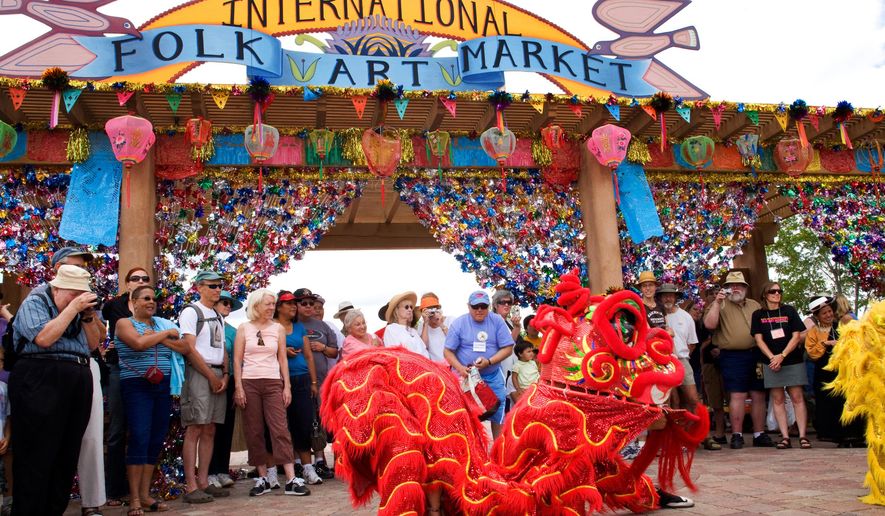SANTA FE, N.M. (AP) - It’s more than the world’s largest folk art market. It’s about keeping traditions alive and helping artisans from developing countries use their skills to start their own businesses.
Now in its 12th year, the International Folk Art Market will feature more than 150 artists who will be showcasing everything from hand-woven baskets and blankets to vessels hammered out of silver, colorful carvings, ceramics, jewelry and intricate beadwork.
Organizers say the recent wave of interest in all things handmade has helped the market to grow exponentially. Last year alone, sales topped $3 million for the weekend and artists - many of whom are from impoverished countries - took home 90 percent of that.
Co-founder Judy Espinar says the market has evolved into a tool for artists to better their lives and their communities and for others to learn more about people from other parts of the world.
“We all need to be reminded that nothing is one-sided and that’s why that part of it is so rich for me. We are exchanging more than money,” she said. “We are exchanging admiration, respect and interest.”
And then there’s that fascination that comes from immersing one’s self in new ideas, or in some cases ideas that have been around for centuries, she said, pointing to some of the art that is based on techniques that have been passed down for generations.
The three-day event begins July 10 in Santa Fe. Some 20,000 people are expected to attend. Here are some things to know:
___
THE ARTISTS:
Since the market’s inception in 2004, about 750 artists from 91 countries have participated. They come from as close as Mexico and as far away as Africa, the Middle East and parts of Asia. This year, the Indian government is paying for seven of 17 artists to make the trip. That marks a first for the country and the largest group from Indian to ever participate. Another 17 artists from Cuba will also be at this year’s show.
___
THE STORIES:
Organizers say one of the best parts of the market is getting to talk to the artists themselves. There are the Maasai widows from Kenya who make bracelets, pendants and necklaces; the weavers from Rwanda who have managed to bring back traditions in the wake of the 1994 genocide; the Japanese kite maker and the Turkish ceramists who use designs and colors that date back to the 8th and 9th centuries.
___
THE RIPPLE EFFECT:
Over the last 11 years, sales generated more than $20 million, with nearly all of that being kept by the artists, some of whom come from countries where the average income is less than $3 a day. One weekend of selling their wares in Santa Fe can provide the means to make serious changes at home - from financing the building of schools and health clinics to things like buying three months’ worth of food for more than 500 people in nearby villages.
___
BEHIND THE SCENES:
Another part of the market focuses on entrepreneurship and giving the artisans the tools they need to benefit from their skills. Business training for many of them starts a couple of days before the market, with lessons from executives in the fashion, home and business community. The idea, organizers say, is to teach them how to navigate the demands of selling work in the global marketplace. There are also opportunities for online learning.
___
GOING VIRTUAL:
Can’t make it to Santa Fe? Organizers plan to open a virtual market this fall that will offer more than 200 handmade, one-of-a-kind pieces as part of a pilot project. On the list will be jewelry from Peru and Niger, metal bowls from Haiti and felt and silk shawls from Kyrgyzstan.
___
IF YOU GO:
The International Folk Art Market runs from July 10 to 12 on Museum Hill in Santa Fe, N.M. More details can be found at https://www.folkartalliance.org




Please read our comment policy before commenting.